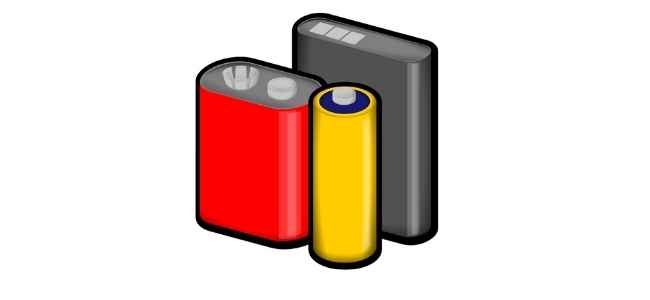Most of us never really thought of a world without batteries.
Whether it’s a smartphone, laptop, watch, or remote, the battery is the major source of power. Is it possible to conceive a world without these sources of energy?
Without batteries, we would not be able to develop any wireless electronic devices. And, would instead have to depend on a wired power supply for anything from electric automobiles to space missions.
If you’re not even aware of the existence of different types of batteries, no worries. You’ve come to the right place. Keep on reading for our full breakdown of the variety of battery kinds on the market and how they’re classified.
Understanding Different Types of Batteries: Primary Batteries
Let’s start with the basic classification of battery types.
When you drain a primary battery, you can’t recharge it. Basically, you can’t stop the electrochemical process in primary battery cells.
Coin cells to AA batteries are all examples of primary batteries. They are often utilized in situations when charging is either inconvenient or impossible. Examples include military-grade equipment and battery-powered gadgets.
Soldiers will not think about recharging their batteries, making rechargeable batteries impracticable. When using primary batteries, the systems involved are always intended to use as little power as possible. So that the battery may last as long as feasible.
Secondary Batteries: The Ability to Hold Charge
To reverse the chemical processes of secondary batteries, you must apply a particular voltage to the battery. Secondary cells are sometimes known as rechargeable batteries. Those you can recharge after you’ve used up the battery’s energy.
It is common for people to use them in situations where single-charge batteries would be too costly or impractical.
On the other hand, you have portable electronic devices like mobile phones and other gadgets and appliances. The secondary batteries can power those items. Whereas you can use heavy-duty batteries to power different electric cars and other high-drain applications. Like load leveling in power production.
To provide energy, you can also use them as a stand-alone power source with Inverters. Rechargeable batteries are more expensive upfront than primary batteries. But, in the long run, they are the most cost-effective option.
And, when it comes to long trips and going on adventures, you’ll want to have a reliable battery on your side. Check out Enduro Power, and we can assure you that you won’t regret it.
Common Types of Batteries: Based on Materials
Now that we have a solid understanding of the two main categories of batteries, it’s time to divide them up based on the materials the manufacturers use.
Some of them, you might already be familiar with.
Alkaline Batteries
The earliest commercially accessible batteries were alkaline batteries. Waldemar Jungner and Thomas Edison both created them at the same time, although separately. However, the first dry cell alkaline battery built by Canadian Lewis Urry in the 1950s eclipsed their early batteries.
Zinc serves as the negative electrode of an alkaline battery, while manganese dioxide serves as the positive electrode. As the battery is depleted, both chemicals are eaten. So alkaline batteries may be considered disposable since they only have a single-usage. Discharged batteries can’t be safely recharged.
Per unit cost, alkaline batteries are the least expensive option. They are reliable throughout the whole process. When an alkaline battery approaches the end of its useful life, you won’t notice a decrease in power. It’s tough to recycle alkaline batteries since they’re so hard to dismantle
Nickel Metal Hydride Batteries
It was in the late 1960s when NiMH batteries were first developed. Automotive industry investments from businesses like Volkswagen and Daimler-Benz were the primary driver of growth. More affordable and more dependable battery technology was sought after by the automotive industry.
An intermetallic compound containing nickel serves as the negative electrode in this battery. Nickel hydroxide is used as the positive electrode. NiMH batteries can be recharged since they don’t deplete their components while they’re being discharged.
Alkaline batteries are less costly than NiMH batteries, which are more expensive. Most batteries have a life span of roughly 500 charges. You’ll notice a noticeable decrease in power as time goes on because of the gradual decline in performance. Additionally, NiMH batteries take a long time to charge.
Lithium-Ion Batteries
This kind of battery, sometimes known as Li-ion batteries, is the most recent of three basic varieties. They are batteries that can be recharged and used again and again. As an example, the battery in your smartphone is Li-ion.
Lithium-ion battery development got underway in earnest in the ’70s. A commercially viable Li-ion battery wasn’t released until the early 1990s. Li-ion technology has improved significantly during the last two decades as a result of the proliferation of personal devices.
Because they’re the most costly, Li-ion batteries have a big benefit over the other two: they pay for themselves rapidly. You can charge NiMH batteries can only once.
However, Li-ion batteries can be charged twice as many times Indeed, lithium-ion batteries from Pale Blue Earth may be recharged more than 1,000 times.
Battery life is another benefit of lithium-ion. As the battery drains, there is no decrease in performance. Lithium-ion batteries may recharge in as little as one to three hours, making them ideal for mobile devices.
Li-ion batteries are up to 30 percent lighter than alkaline and nickel-metal hydride batteries, making them suitable for travel.
Types of Battery: Explained
It doesn’t matter if you’re not really that interested in scientific topics. Figuring out the qualities and the different types of batteries is essential, especially if you’re intending to make a big purchase.
Hopefully, our guide has shed some light on the variety of battery types that you can find on the market. This way you can make a well-educated decision.
And, if you liked reading our article, then you’ll love checking out our additional tips and tricks. All of them will be posted in our technology section.


